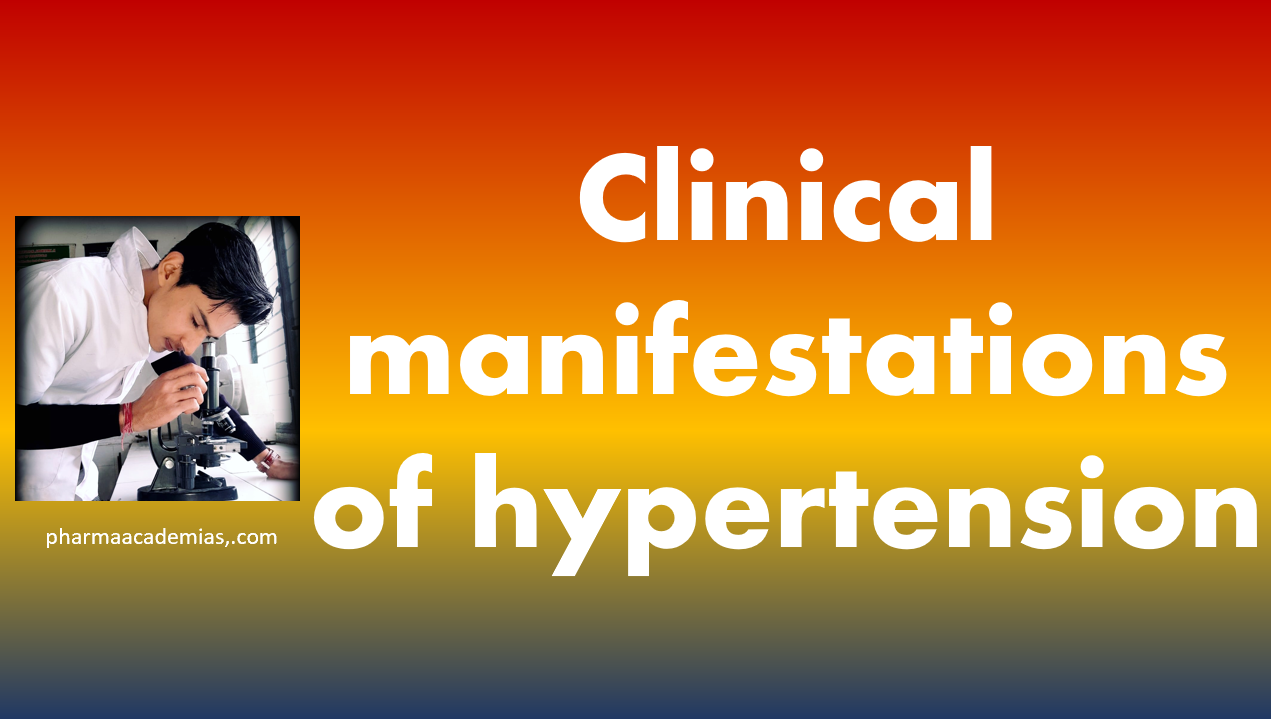Hypertension, often called the “silent killer,” may not present noticeable symptoms in its early stages. However, prolonged elevated blood pressure can lead to various clinical manifestations and contribute to serious health complications. Here are common clinical manifestations associated with hypertension:
1. Headaches
Persistent or severe headaches, especially in the morning, can be a symptom of hypertension. However, headaches alone are not specific to hypertension and can have various causes.
2. Visual Changes
Hypertension can affect the small blood vessels in the eyes, leading to changes in vision. Blurred vision, double vision, or the perception of flashing lights may occur.
3. Fatigue and Weakness
Prolonged elevated blood pressure can contribute to feelings of fatigue and weakness. Reduced blood flow to various organs and tissues may decrease energy levels.
4. Dizziness or Lightheadedness
Hypertension can affect blood flow to the brain, leading to dizziness or lightheadedness. This can be particularly noticeable when standing up quickly.
5. Shortness of Breath
Hypertension can contribute to heart failure or affect the lungs, leading to shortness of breath, especially during physical activity.
6. Chest Pain (Angina)
Uncontrolled hypertension can strain the heart and contribute to coronary artery disease. This may result in chest pain or discomfort, known as angina, particularly during exertion.
7. Irregular Heartbeat (Arrhythmias)
Hypertension can contribute to the development of abnormal heart rhythms or arrhythmias. Palpitations or a sensation of an irregular heartbeat may occur.
8. Nosebleeds (Epistaxis)
While not a common symptom, some individuals with hypertension may experience recurrent nosebleeds.
9. Kidney Dysfunction
Hypertension can affect the kidneys, leading to reduced kidney function. This may manifest as changes in urination patterns, fluid retention, or swelling in the legs and ankles.
10. Cognitive Changes
Chronic hypertension is a risk factor for cognitive decline and vascular dementia. Individuals may experience difficulty concentrating, memory issues, or confusion.
11. Peripheral Artery Disease (PAD)
Hypertension can contribute to the development of peripheral artery disease, affecting blood flow to the limbs. This may result in leg pain or cramping during physical activity.
12. Facial Flushing
Flushing or redness of the face may occur in some individuals with hypertension. This can be related to changes in blood vessel function.
It’s important to note that hypertension is often asymptomatic in its early stages, underscoring the importance of regular blood pressure monitoring. The clinical manifestations mentioned may become evident as the condition progresses or if complications arise. Early detection, lifestyle modifications, and appropriate medical management are crucial in preventing complications associated with hypertension. Individuals with concerns about blood pressure or experiencing symptoms should seek prompt medical attention.


 Join Our Telegram Channel
Join Our Telegram Channel